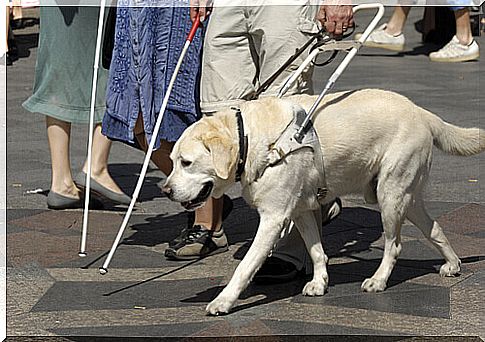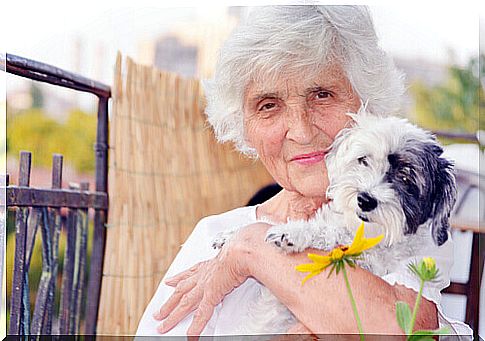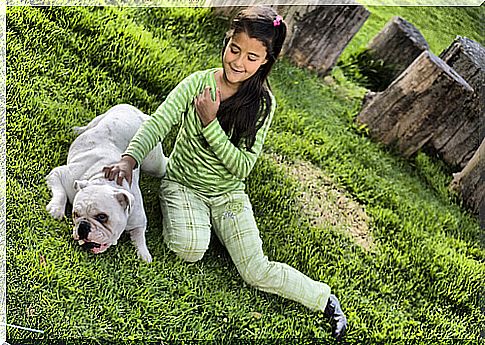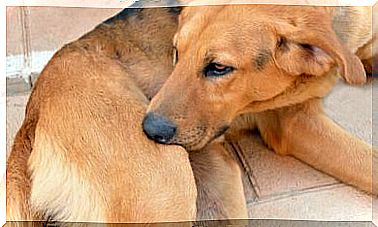The Work Of An Assistance Dog

They are known as assistance dogs because they have been specifically trained to provide help for people with different types of disabilities, helping them to achieve a better quality of life, both physically and psychologically.
Thus, dogs help their assisted to have a good development in their daily lives, whether in a private or public environment, allowing them to overcome their own limitations and also the barriers that the environment can present.
The various functions of an assistance dog
There are many and varied tasks that can be performed by an assistance dog, although they can be classified into three main categories:
Guide dogs for the blind
Accompanies the blind, or those who have a severe vision impairment, helping to move safely from one place to another. It is the oldest of the assistance dogs category. Records of the existence of guide dogs date back to the 18th century.
However, the guide, as we understand it today, appeared after the First World War. Its main functions are:
- Stop at the edges of sidewalks and steps;
- Avoid obstacles;
- Ignore orders if they endanger the life of the person you are driving.
Breeds most commonly used for this task are Labradors , German Shepherds, and Golden Retrievers. Lately, the Labradoodle (a cross between Labrador and Poodle ) has been joined , as they do not shed fur, making them more suitable for people with allergies.
These breeds are chosen because the guide dogs must have a certain height, some specific psychological skills and also enjoy the company of people.
flag dogs

The assistance dog that provides assistance to the deaf, or those with hearing impairments, is called a signaling dog. They are trained to touch with their paws or snouts the people they follow when they hear certain sounds. For example:
- Screams of children or babies;
- Fire alarms ;
- House bell;
- Alarm clock;
- Car speaker;
- Appliance alarms (ovens, washing machines, microwaves, etc.).
service dogs
They help people with other types of disabilities or special needs. The functions to fulfill are different:
- Warnings. They are trained to alert you to a specific medical condition. For example, there are those who can detect hypoglycemia in diabetics, or an impending attack of epilepsy. They are also prepared to activate an alert system to call for help for the person in need.
- Monitoring people with autism. They protect the physical integrity and control of emergency situations. They avoid escape behaviors, reduce stereotyped movements and facilitate the social integration of their clients.
- Helps people with physical and motor problems. They are trained to turn lights on and off, pick up objects, open and close doors and drawers, undress the individual, bring a wheelchair and help the person if he falls.
Both signal dogs and service dogs tend to be selected from animal shelters. For this reason, there is no specific race to do these tasks.
In addition to these specific functions, assistance dogs are a good psychological support for the people they help. Their company alone allows them to have a better attitude towards life, giving them more confidence and security.
They also help them relate to other human beings and exercise.
How is a service dog selected and trained

Author: Carlos Zambrano
In addition to being socialized – with people, dogs and other animals – and receiving basic training, these dogs are evaluated in terms of temperament, overall personality as well as health and physical attributes, so that once the skills are selected, they start with training specific.
This must be carried out by specialized and legally recognized individuals or institutions.
People who need the services of these dogs are also evaluated, it is considered if they will take care of the animal and if this can, in fact, improve their quality of life.
In addition, people who need a service dog, need to understand that these animals must be treated with love, must have leisure time for play and walks, and provide all the other things that a dog without this type of responsibility also needs. .
Having a specific disability does not exempt a person from the responsibility of caring for a dog, as well as providing him with love, contributing daily to make his life happier.









